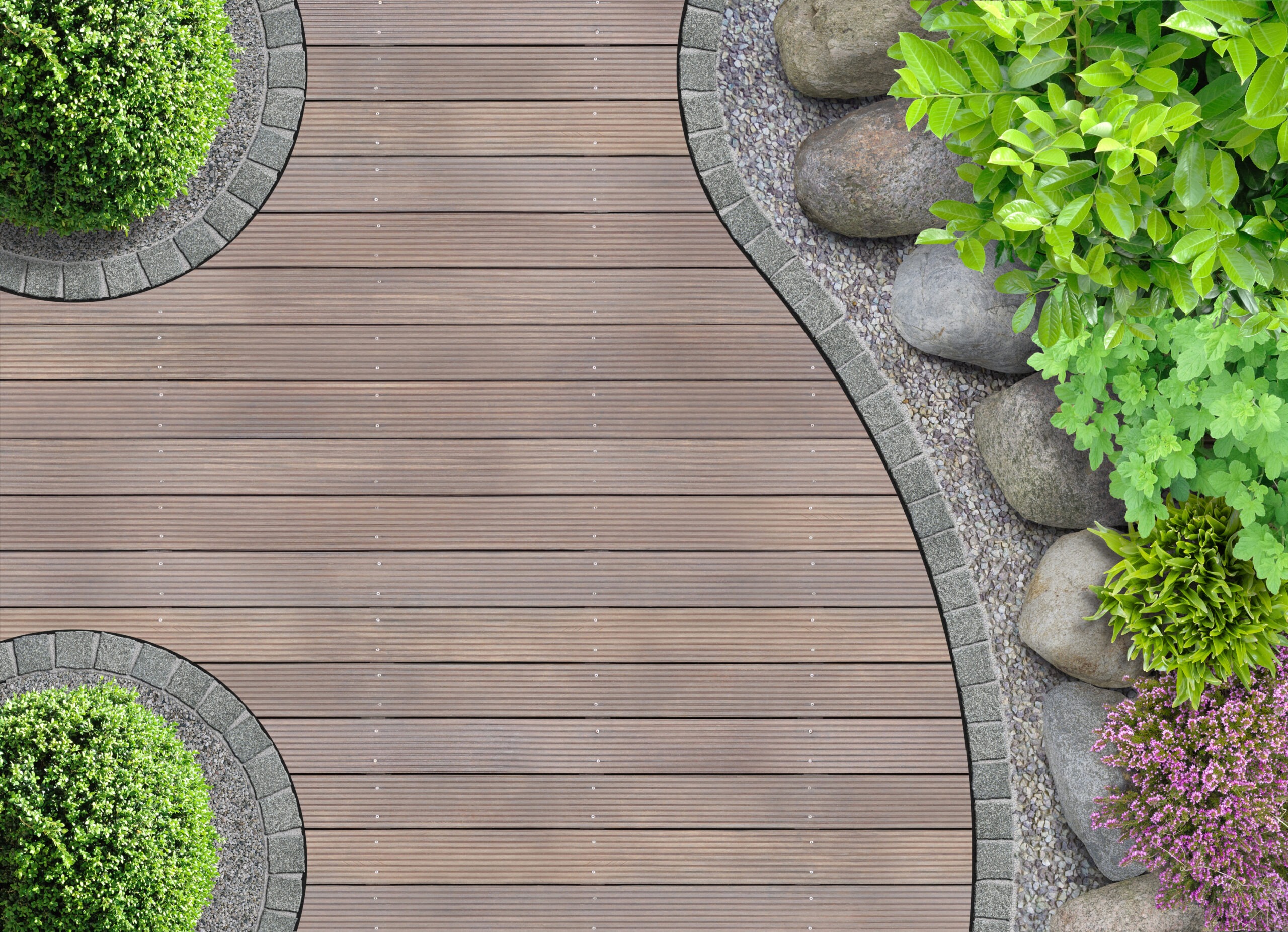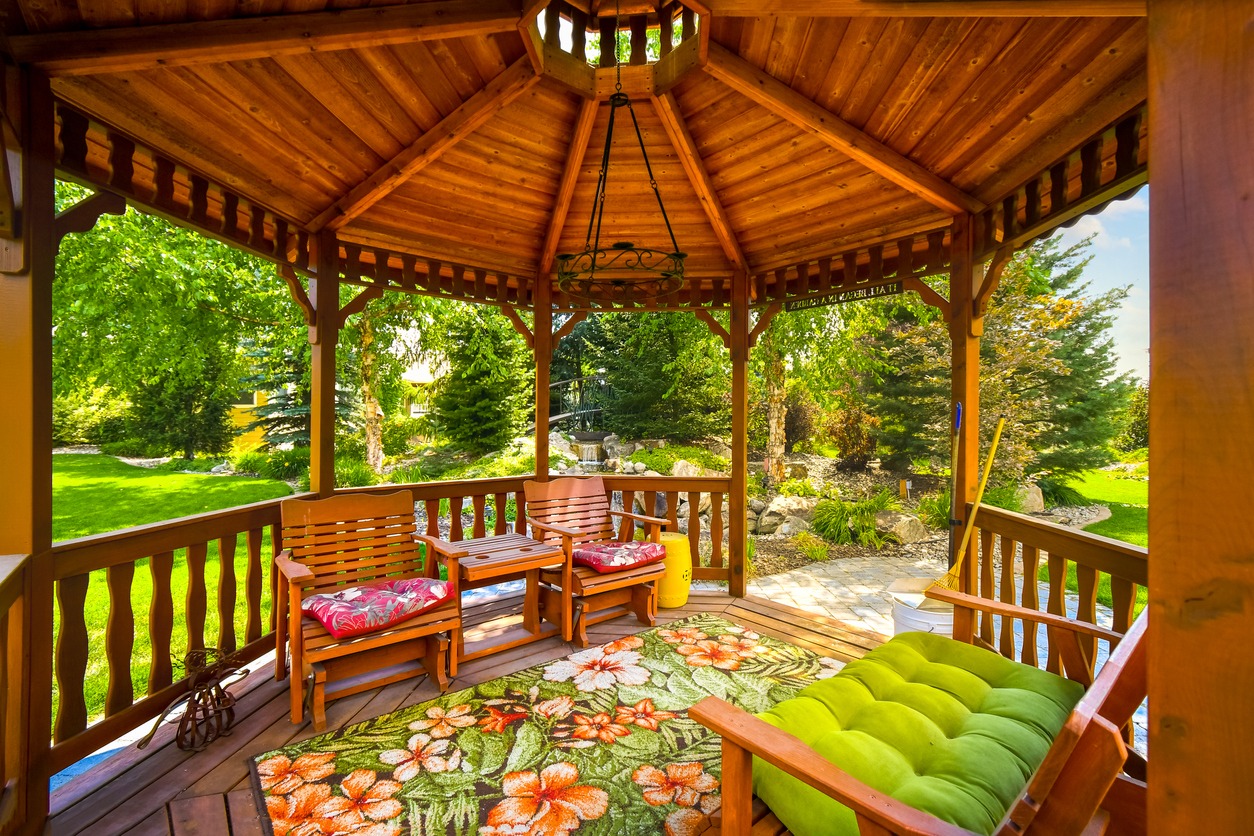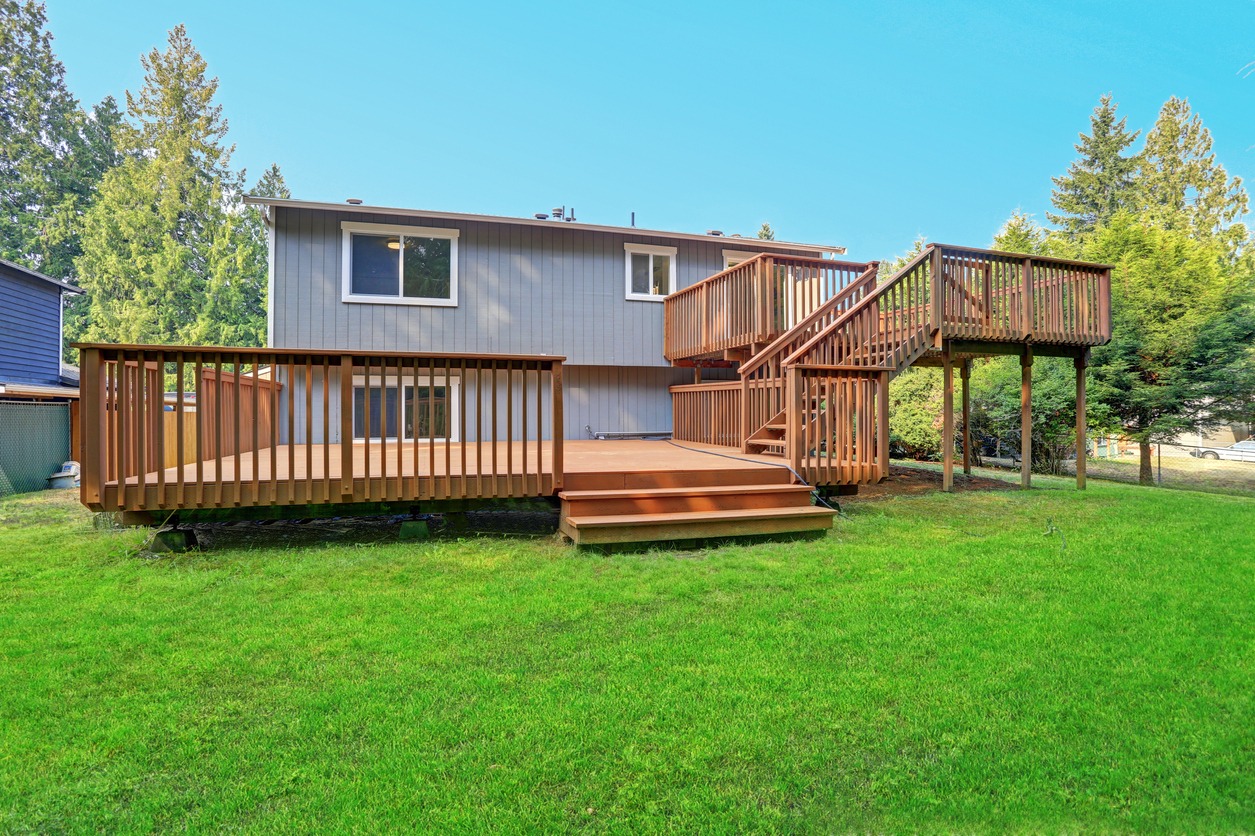As homeowners consider expanding their living space beyond the interior confines, the allure of a well-designed deck becomes ever more appealing. A deck not only enhances the aesthetic charm of a home but also offers a versatile outdoor space for relaxation and entertainment. The philosophy of deck design has evolved to encompass a variety of styles, materials, and functional elements that harmonize with both the natural environment and the architectural qualities of the existing home.
Integrating a deck into a home’s design requires thoughtful planning and an appreciation for the interplay between form and function. Modern deck aesthetics vary widely, with some homeowners opting for minimalist designs that emphasize clean lines and uncluttered spaces, while others might incorporate more intricate patterns or bold features. Choices in materials also reflect homeowner preferences, from traditional woods to advanced composites that offer durability and ease of maintenance.
Moreover, the customization of outdoor spaces now considers not just the deck structure but also the details that make the space unique. This includes selections in deck railing, board arrangements, color schemes, and added amenities like built-in seating or fire features. Ultimately, the goal of deck design is to create an inviting outdoor area that reflects the homeowner’s lifestyle and enhances the home’s overall character.
Understanding Deck Design Fundamentals
In deck design, functionality meets artistry. A well-designed deck serves specific purposes while incorporating materials and safety features harmoniously.
Defining Your Outdoor Space’s Purpose
A deck can transform an outdoor area into a hub for relaxation or social gatherings. It should reflect the homeowner’s lifestyle and intended use, whether it be for dining, lounging, or entertainment. The deck’s layout should accommodate the desired activities, providing ample space for furniture, barbecues, or even a hot tub if relaxation is a primary function.
Exploring Decking Material Options
- Wood Decking: Classic and warm, wood decking like cedar and redwood offers natural beauty but requires maintenance to resist weather and wear.
- Composite Decking: A blend of wood fibers and recycled plastics, composite decking provides durability and low maintenance with a consistent appearance.
| Material Type | Maintenance Level | Expected Lifespan | Aesthetic Appeal
|
|---|---|---|---|
| Wood | High | 10-15 years | High |
| Composite | Low | 25+ years | Medium |
Choosing the right material is crucial as it directly impacts the deck’s functionality and longevity.
Ensuring Safety and Durability Through Design
Designing with safety in mind ensures a deck that can be enjoyed without worry. Railings are mandatory for elevated decks, and the spacing of balusters must prevent children from slipping through. Stairs should have adequate lighting and handrails to assist in safe navigation. Durability extends beyond material choice, encompassing the quality of construction. Proper framing and fastening techniques protect the deck’s integrity over time.
Aesthetic Elements of Deck Designs
The aesthetic appeal of deck designs hinges on the harmonious blend of color schemes, textures, and the integration of greenery, each contributing to a deck’s overall ambiance and style.
Choosing Color Schemes and Textures
When selecting color schemes for a deck, one must consider the colors that already exist in the home’s exterior and the natural surroundings. It is advisable to use subtle, neutral colors or natural wood tones as a base, which can then be accentuated with bolder pops of color through accessories or outdoor furniture. Textures add depth and character to a deck design. The options range from smooth, finely-milled wood to rugged, brushed finishes that can provide slip resistance and a more natural appearance.
- Base Colors: Neutral or natural wood tones
- Accent Colors: Bold, complementary colors for accessories
- Textures: Choose from smooth to rugged finishes for style and function
Incorporating Greenery and Planters
Introducing planters and a variety of greenery transforms a deck into a vibrant living space. One can incorporate large potted plants to create privacy or use smaller, colorful flowers for decorative purposes. The use of native plants that thrive in the local climate can minimize maintenance. Strategically placed planters can also serve as natural barriers or focal points within the deck’s layout.
- Large Plants: For privacy and structure
- Small Flowers: For vibrant color accents
- Native Greenery: To ensure low maintenance and local adaptation
Each aesthetic element should be meticulously chosen to achieve a cohesive and inviting outdoor living space.
Deck Features and Accessories

A thoughtfully designed deck enhances outdoor living experiences, with features such as railings and lighting contributing significantly to functionality and ambiance.
Deck Railing Choices
Deck railing options serve both safety and aesthetic functions on a modern deck. Homeowners can choose from a variety of materials, including:
- Wood: Traditional and versatile, it can be painted or stained to match any style.
- Composite: Durable and low-maintenance, often resembling natural wood without the upkeep.
- Metal: Includes options like aluminum or steel, offering sleek lines for a contemporary look.
- Glass: Panels create an unobstructed view, ideal for scenic locations.
- Cable: Stainless steel cables provide safety without compromising visibility.
Each material offers different benefits, whether one seeks the warmth of wood or the modern appeal and minimal maintenance of composite and metal alternatives.
Lighting and Water Features
Deck lighting is essential for creating a welcoming atmosphere and extending the usability of a deck into the evening hours. Lighting options include:
- Post Cap Lights: Subtle illumination at the top of deck posts.
- Recessed Deck Lights: Flush with the deck floor, they provide soft lighting.
- Stair Lights: Increase safety by highlighting steps and changes in elevation.
In addition to lighting, incorporating water features can transform a deck into a tranquil retreat. They include elements like:
- Fountains: From small tabletop varieties to larger, free-standing pieces.
- Waterfalls: Can be integrated into deck railing or steps for a natural, cascading effect.
Using lighting strategically can highlight architectural details and water features, turning a simple deck into an enchanting nighttime space.
Customization Techniques
Crafting a deck that mirrors personal style and functionality is essential for homeowners looking to enhance their outdoor living spaces. Techniques range from intricate decking patterns that create visual interest to selecting furniture and decor that resonate with the homeowner’s aesthetic preferences.
Innovative Deck Patterns and Borders
Introducing innovative deck patterns can transform a simple deck into a stunning feature. A herringbone pattern, characterized by its broken zigzag design, provides a sophisticated flair, while a chevron pattern, with its pointed V shapes, adds dynamic movement to the deck surface. Incorporating a picture frame border, which outlines the deck with contrasting material or color, not only defines the space but also adds a custom, one-of-a-kind finish to the deck’s design.
Customizable Deck Furniture and Decor
Choosing deck furniture and decor that reflect a homeowner’s unique style is pivotal in creating a personalized retreat. Custom furniture pieces, such as handcrafted tables or benches, offer both uniqueness and function. For added comfort and a splash of color, weather-resistant cushions in various patterns and hues can be strategically placed. Décor items, ranging from outdoor rugs to decorative lighting, serve as the finishing touches that personalize the space while maintaining practicality for outdoor conditions.
Pergolas and Covered Deck Options
When designing an outdoor living space, incorporating covered deck options like pergolas brings a blend of style and functionality. These structures not only enhance the aesthetic appeal of a deck but also provide practical benefits such as shade and vertical space utilization.
Mixing Functionality with Style
Pergolas are an ideal choice for those looking to marry functionality with style in their decking area. They offer partial to full shade depending on their design, allowing for indirect light that can be adjusted throughout the day. For full coverage, a pergola with a retractable or permanent roof can be utilized to block light entirely, creating a cool, shaded area even during the hottest parts of the day. Homeowners often choose materials that match or complement their decking to maintain a cohesive look. For instance, if a deck features a prominent wood finish, selecting a wooden pergola can extend this natural aesthetic vertically.
- Functionality: Provides shade, defines space, supports climbing plants
- Style: Material and design options to complement deck aesthetics
Outdoor furniture positioned under a pergola can create a comfortable, sheltered vantage point, enhancing the usability of the deck throughout various weather conditions.
Making Use of Vertical Space
Vertical space often goes unused in outdoor areas, but pergolas provide a way to take advantage of this dimension, thereby increasing the overall living space. They can support hanging plants or vines, adding a touch of greenery that grows upward, which can help soften the structure and integrate it with the surrounding landscape. Additionally, pergolas create an outdoor room-like space, which invites opportunities for decorative lighting, such as string lights or lanterns, fostering a warm and inviting ambiance.
Vertical Space Utilization:
- Support for greenery: Ideal for vines and climbers
- Opportunity for lighting: Enhance ambiance with string lights or fixtures
By considering pergolas and covered deck options in deck design, homeowners can expertly tailor their outdoor space to provide both protection from the elements and a sophisticated environment for relaxation or entertainment.
Advanced Deck Design Concepts
Modern deck designs push the boundaries of traditional outdoor spaces by introducing innovative features and layouts. Not only do these designs enhance the aesthetics of a home, but they also offer functional benefits that cater to various lifestyles.
Multi-Level and Rooftop Decks
Multi-level decks provide a dynamic aesthetic and utilitarian advantage for uneven terrains or homes wanting to maximize outdoor space. They create distinct areas for different activities, such as dining, lounging, or gardening, and can be designed with connectivity or privacy in mind. Rooftop decks, on the other hand, capitalize on vertical space in urban environments, offering a private escape with potential panoramic views. These decks may include built-in seating or green spaces to create a comfortable rooftop oasis.
Advantages of multi-level decks:
- Optimized use of sloped landscapes
- Separate functional areas enhancing organization
Features of rooftop decks:
- Outdoor kitchens: For efficient space utilization and entertaining guests.
- Seating areas: Often with built-in benches or plush furniture for comfort.
Creating an Outdoor Living Room
An outdoor living room takes the concept of the traditional backyard deck and transforms it into an extension of a home’s interior. Equipped with weatherproof sofas, fire pits, and even entertainment systems, these spaces are about comfort and functionality. The design can also integrate modern deck materials that offer durability and complement the aesthetic of the house.
Elements of an outdoor living room:
- Luxurious seating: Area rugs, sofas, and throw pillows add indoor comfort to an outdoor setting.
- Entertainment features: Options like built-in sound systems and discreetly placed screens.
By thoughtfully incorporating multi-level structures, rooftop decks, and comfortable, livable spaces into deck design, homeowners and designers can drastically increase not only the allure but also the practicality of an outdoor area.
Selecting the Right Professionals
When creating the perfect deck, homeowners should focus on professionals who offer both expertise in design and practical construction abilities. It’s essential to discern the specific roles and advantages of working with specialized deck builders, designers, and contractors to ensure the successful completion of a deck that meets one’s aesthetic and functional requirements.
Working with Deck Builders and Designers
Deck builders and designers bring distinct but complementary skills to the deck creation process. Homeowners should prioritize experience and a solid portfolio when selecting these professionals. A deck builder is typically skilled in the practical aspects of construction, efficiently translating design plans into physical structures. They ensure the deck is built to code and can withstand the elements and usage over time.
A designer, on the other hand, focuses on the aesthetic and usability aspect of the deck. The homeowner’s personal style, choice of materials, and the layout of the surrounding landscape are all factors that a designer artfully considers. Collaborating with a professional deck builder who can also offer design insights or who has a partnership with a designer can make the process smoother.
| Professional | Focus Area | Importance
|
|---|---|---|
| Deck Builder | Construction, building codes, materials | Ensures a sturdy and safe deck |
| Designer | Aesthetics, functionality, personal style | Creates a visually-pleasing space |
In selecting a professional, it’s prudent to review past projects and client testimonials to gauge experience and customer satisfaction.
Understanding the Role of a Contractor
A contractor generally assumes the overarching responsibility for the deck project. They may work independently or as part of a larger home improvement firm, overseeing both the design and building processes. A contractor ensures all parts of the project are synchronized, from acquiring materials to scheduling labor. They also handle logistics, such as permits and inspections, which are critical to the legal and safe completion of the deck.
In searching for a contractor, one should look for certifications, insurance, and a clear contract that outlines the scope, timing, and cost of the project. Homeowners could choose to hire an independent contractor or a professional deck building company with a team that includes both builders and designers to simplify communication and accountability.
- Experience & Credentials: Confirm their track record of building decks similar to what you envision.
- Portfolio of Work: Request to see examples of previous projects.
- Reviews and Testimonials: Check online reviews or request references.
- Detailed Contract: Ensure clarity on cost, timeframes, and what’s included.
- Professional Affiliations: Check if they are part of any recognized industry associations.
Final Thoughts
Exploring deck design and aesthetics is a pivotal element in transforming outdoor living spaces into personal oases. The right deck design not only enhances the visual appeal of a home but also extends the living area, providing a seamless blend between indoor and outdoor spaces. Modern deck trends focus on creating a space that reflects personal style while ensuring functionality. From choosing sustainable materials that promise longevity and minimal environmental impact to incorporating innovative design elements like built-in seating or multi-level structures, the possibilities are endless. A well-designed deck becomes more than just a structure; it evolves into a sanctuary for relaxation, entertainment, and enjoyment of the natural surroundings.
Furthermore, the aesthetics of a deck play a crucial role in complementing the overall landscape and architectural features of the home. Whether it’s through the integration of garden landscaping, the use of color and texture, or the addition of accessories like outdoor lighting and planters, every detail contributes to the creation of an inviting and cohesive outdoor environment. As outdoor living spaces continue to gain prominence in home design, the deck becomes a central focus, offering a unique opportunity to express creativity and enhance quality of life. Ultimately, the journey of designing and personalizing a deck is as rewarding as the enjoyment and comfort it brings, making it a worthwhile investment in any home.





